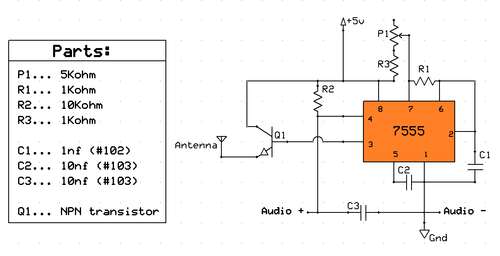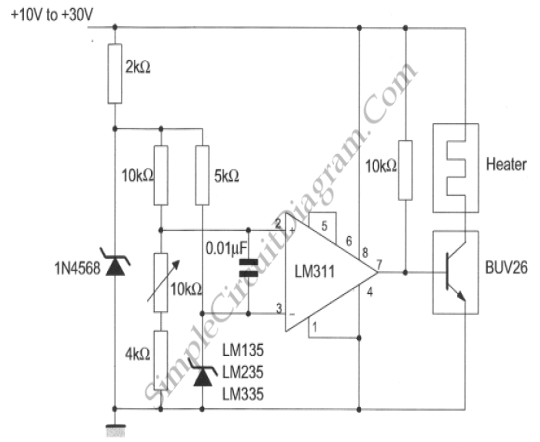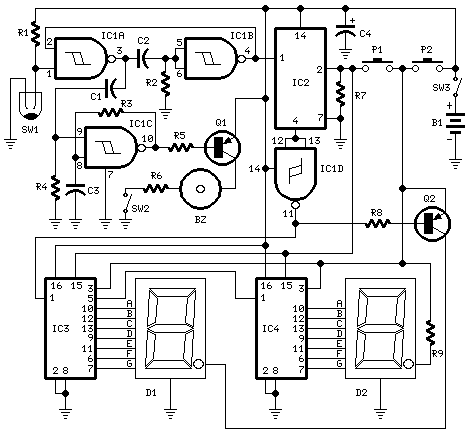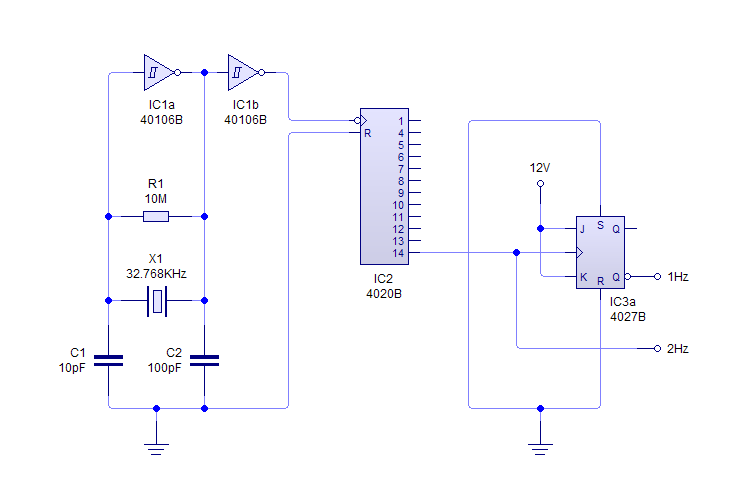
555 Simple circuit diagram of the timing of time

The circuit features a straightforward long timing mechanism. Activating switch AN initiates the timing process, while tone PR allows for timing adjustments. The timing range spans from 3 minutes to 220 minutes. With a capacitance value of 2200 µF, the timing can extend from 40 minutes to 48 hours. The output timing control signal is generated by a 555 timer IC. A high-power control circuit is employed, which can operate relays at terminals B and C or A and B. The relay contacts are utilized to manage various timing loads.
The described circuit employs a 555 timer IC configured in a monostable mode, which is fundamental for generating precise timing intervals. When switch AN is pressed, the 555 timer is triggered, starting the timing sequence. The timing duration is primarily determined by the resistor-capacitor (RC) network connected to the timer. The capacitor's value is crucial, as it dictates the length of the timing cycle; for instance, with a capacitance of 2200 µF, the circuit can achieve extended timing intervals, making it suitable for applications requiring long delays.
Adjustments to the timing can be made via the tone PR, which likely represents a variable resistor or potentiometer that alters the resistance in the RC circuit. This flexibility allows users to fine-tune the timing to their specific needs, ranging from short durations of 3 minutes to long durations up to 48 hours, depending on the capacitor's specifications.
The output from the 555 timer is a control signal that can drive a high-power control circuit. This circuit is capable of operating relays, which are essential for controlling larger loads that exceed the current ratings of the timer IC. The relays can be connected at various terminals (A, B, C) to manage different load types or configurations, allowing for versatile applications of the timing circuit.
In summary, this circuit provides a practical solution for timing applications, combining the reliability of the 555 timer with the flexibility of adjustable timing and the capability to control high-power devices through relay operation. This makes it suitable for various automation tasks, such as controlling lights, motors, or other electrical devices based on timed intervals. As shown for the long timing circuitry simple. Press the switch AN start timing, tone PR can alter timing, the timing range from 3 minutes to 220 minutes. If the capacitance C to 2200 F, the time range can be from 40 minutes to 48 hours. 555 pin output timing control signal. The use of the high power control circuit, will have in the B, C terminus or A, B termination relay. Relay contacts to control the various timings load.
The described circuit employs a 555 timer IC configured in a monostable mode, which is fundamental for generating precise timing intervals. When switch AN is pressed, the 555 timer is triggered, starting the timing sequence. The timing duration is primarily determined by the resistor-capacitor (RC) network connected to the timer. The capacitor's value is crucial, as it dictates the length of the timing cycle; for instance, with a capacitance of 2200 µF, the circuit can achieve extended timing intervals, making it suitable for applications requiring long delays.
Adjustments to the timing can be made via the tone PR, which likely represents a variable resistor or potentiometer that alters the resistance in the RC circuit. This flexibility allows users to fine-tune the timing to their specific needs, ranging from short durations of 3 minutes to long durations up to 48 hours, depending on the capacitor's specifications.
The output from the 555 timer is a control signal that can drive a high-power control circuit. This circuit is capable of operating relays, which are essential for controlling larger loads that exceed the current ratings of the timer IC. The relays can be connected at various terminals (A, B, C) to manage different load types or configurations, allowing for versatile applications of the timing circuit.
In summary, this circuit provides a practical solution for timing applications, combining the reliability of the 555 timer with the flexibility of adjustable timing and the capability to control high-power devices through relay operation. This makes it suitable for various automation tasks, such as controlling lights, motors, or other electrical devices based on timed intervals. As shown for the long timing circuitry simple. Press the switch AN start timing, tone PR can alter timing, the timing range from 3 minutes to 220 minutes. If the capacitance C to 2200 F, the time range can be from 40 minutes to 48 hours. 555 pin output timing control signal. The use of the high power control circuit, will have in the B, C terminus or A, B termination relay. Relay contacts to control the various timings load.




